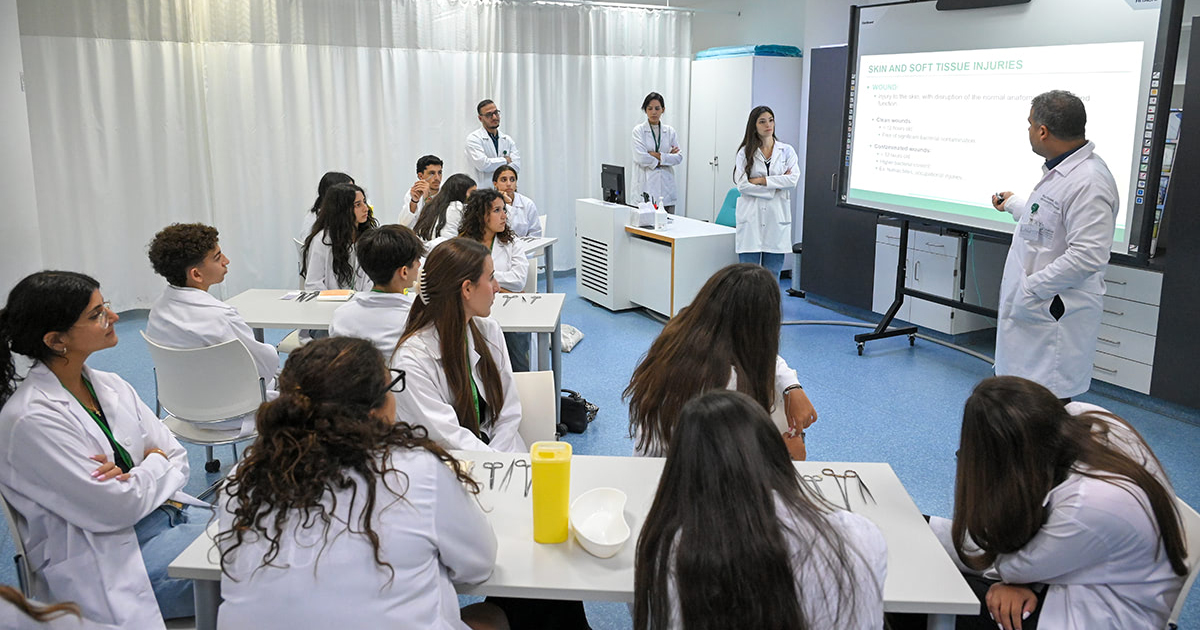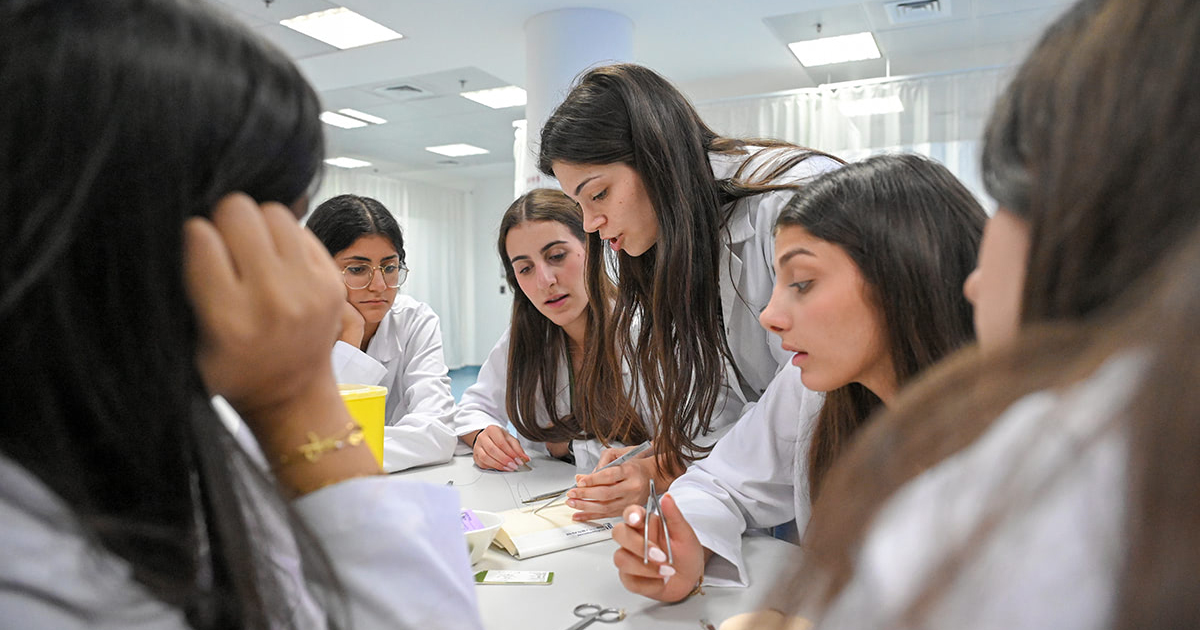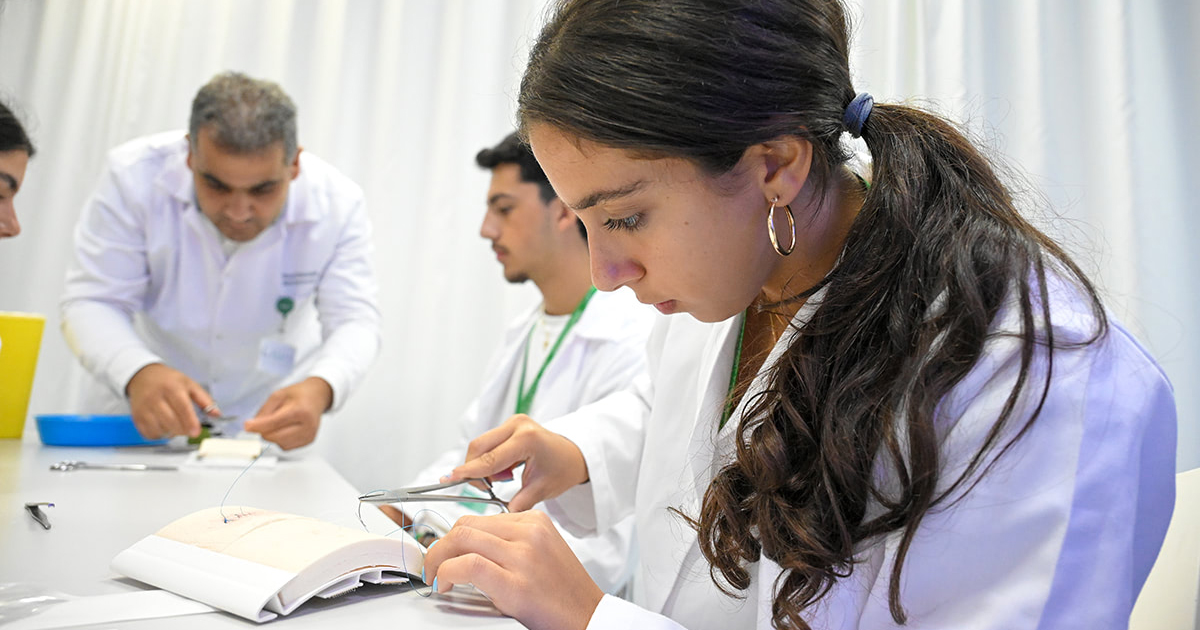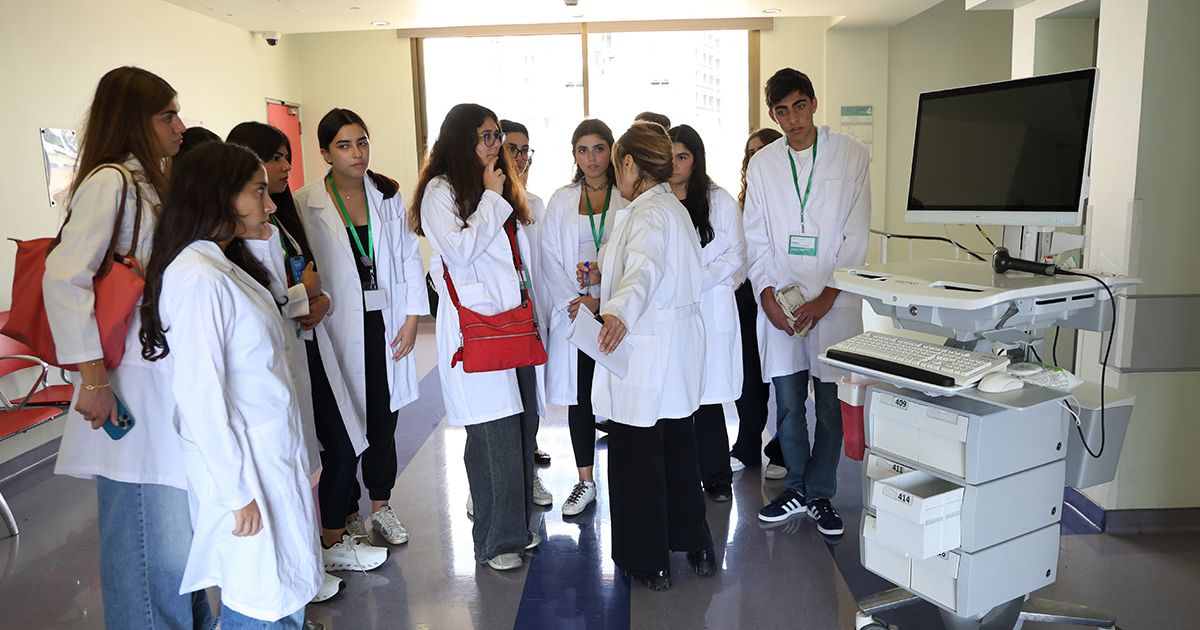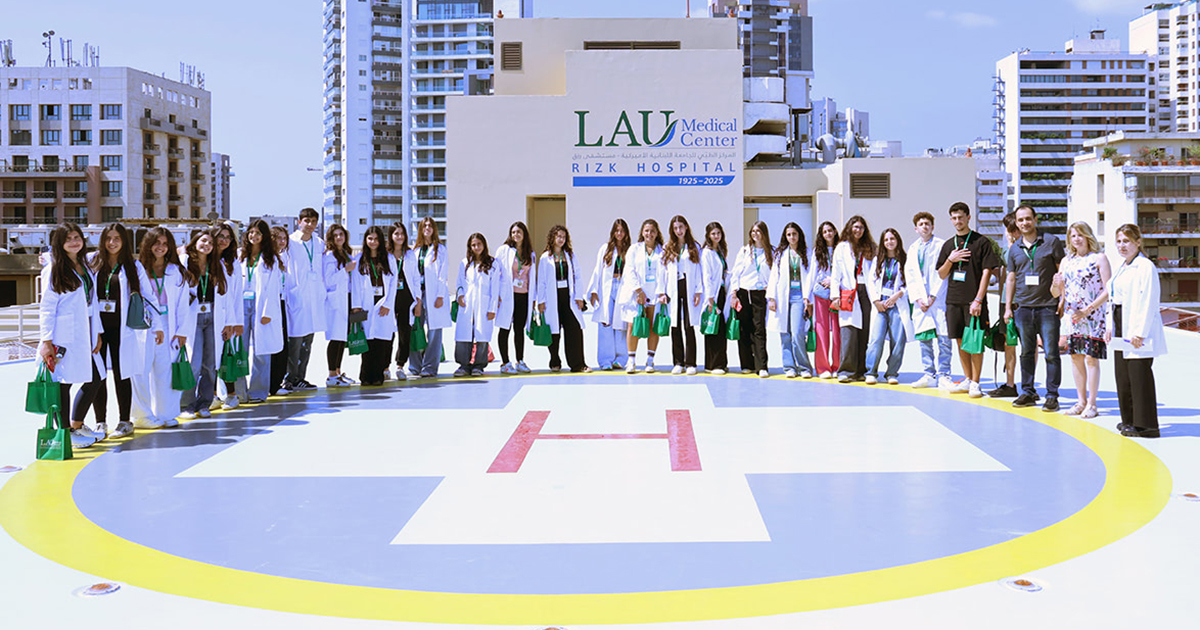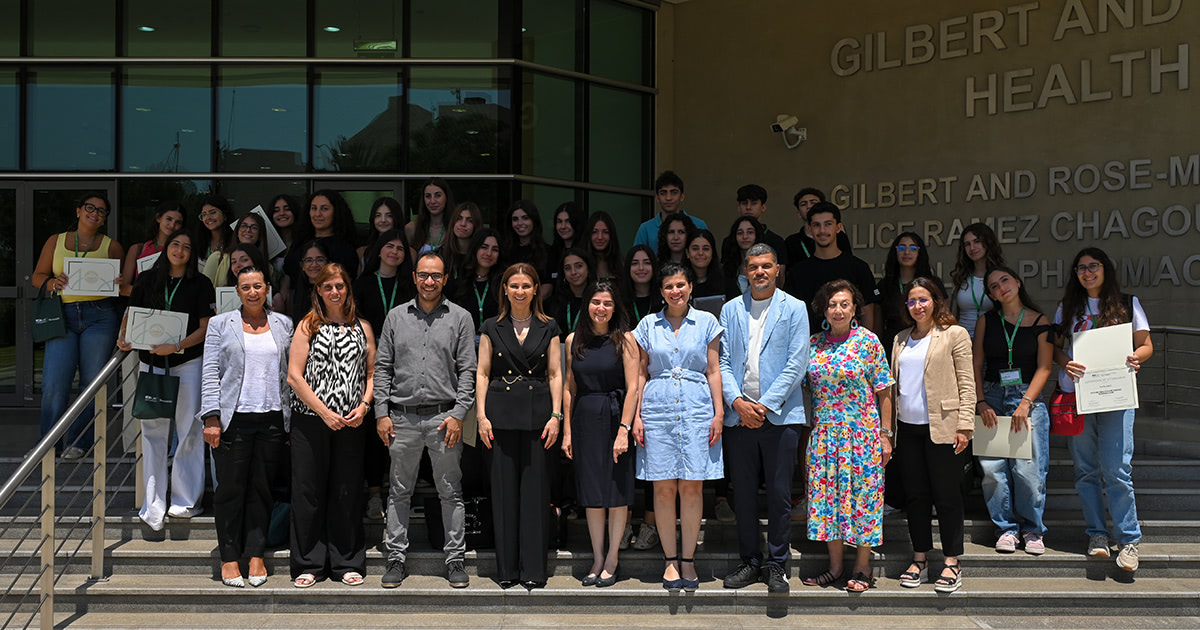LAU Summer Camp Shapes Future Healthcare Heroes
High-school students discover what it takes to become a physician through visits to LAU’s medical centers, simulation labs, and state-of-the-art research facilities.
On July 14 to 18, 2025, the Gilbert and Rose-Marie Chagoury School of Medicine welcomed 27 high-school students to the second rendition of its residential medical summer camp. Designed to give students a well-rounded overview of potential career paths in healthcare, the five-day program demonstrated what their lives would look like as students, researchers, physicians, scientists and leaders.
“We wanted them to see all the subspecialties they could undertake were they to go into medicine,” said Associate Professor and Director of Student Affairs at the school Carmel Bouclaous. “The goal was to spark their interest in one of them or at the very least help them recognize their calling,” she added.
Indeed, students explored the world of healthcare first-hand, rotating through a packed schedule of technical workshops and simulations designed to show them all elements of early medical education.
They learned how to check vital signs, including blood pressure, pulse, respiratory rate, and blood glucose. They also explored comparative anatomy through dissected rats. In microbiology labs, they were introduced to the differences between bacteria and viruses, DNA structures and types of genetic mutations. With the guidance of LAU Med-3 students and using problem-based learning (PBL), the students analyzed clinical cases, reviewed lab tests and built up differential diagnoses for multiple patients.
“Though they’re young, they’re quite mature and their questions were relevant. It was as though I was talking to Med-1 students,” said Assistant Dean for Medical Education and Clinical Assistant Professor Nadia El Asmar.
Beyond technical training, the campers engaged with current LAU medical students, who shared insights about the path from pre-med to residency. “It seemed really valuable that they be in contact with students who have experienced what they might go through on their medical journey at LAU,” added Kevin Azzi (BS ’23), a third-year LAU medical student.
The high schoolers put their new skills to the test at LAU’s Clinical Simulation Center, where they engaged in simulations of ER and trauma scenarios, and practiced wound closure using suture materials on prosthetic skin as well as hands-only CPR on high-fidelity mannequins.
For students, the camp overdelivered on its promises. One student, Mona Al-Hashim, an IB2 student at Antwerp International School, joined the camp because she wanted to get a clearer view of her desired field, cardiothoracic surgery. “I really got what I came here for, and it was worth it,” she said.
For 11th grader Yasmeen Al-Khoury, the camp solidified a passion for patient care that she had discovered when she lost her aunt to cancer. “I want to be an oncologist. It’s going to sound so cliché and unrealistic, but I dream of curing cancer,” she said. “My aunt’s story was very painful, but instead of letting it drain me, it motivated me to help in fighting the disease.”
“I’d heard about medicine from visiting many other universities, but I’d never experienced it like I did here. If I had doubts before, now I know that this is for me,” concluded Al-Khoury.
As LAU continues to invest in its medical education, including the integration of AI-equipped surgical rooms and the expansion of its simulation center, plans are underway to broaden the summer camp and make it more enriching.
“We might expand the camp to two weeks or integrate a course on AI in medicine next year,” said Dr. El Asmar. “We also want to make sure that our medical students interact further with the campers to share their experiences.”
Sharing the sentiment, Dr. Bouclaous said that “the camp gave high-school students a rare and immersive glimpse into the journey of becoming a physician and allowed our medical students to grow as mentors and as role models.”
